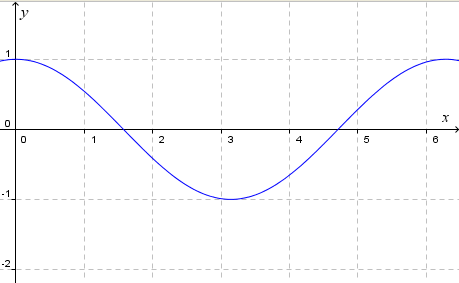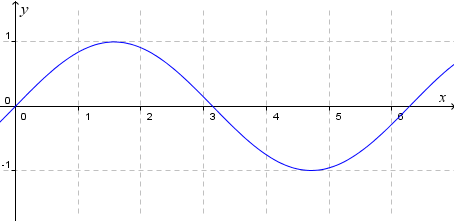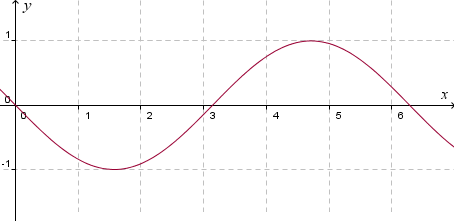Explore the slope of the cos curve
By Murray Bourne, 26 Oct 2010
UPDATE: I've created a new interactive trigonometry derivatives applet to replace the out-of-date one that was on this page.
The background below is still worth reading!
Background
This article is the second in a series. (Here's the first installment: Explore the slope of the sin curve, and the 3rd: Explore the slope of the tan curve.)
First, some reminders so you can better follow what is going on.
The slope of a curve means the slope of the tangent at a particular point. A tangent to a curve means the line that touches the curve at one point only. (See Tangents and Normals).
Curve Reminders
Graph of cos x
Here is the curve y = cos x. The values of x are in radians and one complete cycle goes from 0 to 2π (or around 6.28).

y = cos x
Graph of sin x
The graph of y = sin x has the same shape as the cosine curve, but has been displaced (shifted) to the right by π/2 (or 90°).

y = sin x
We now graph the negative of the above curve, that is, y = −sin x. To achieve this, we reflect the curve in the x-axis. This has the effect of multiplying each y-value in the curve by −1. Putting this another way, we "turn the graph upside-down", through the x-axis.

y = −sin x
Now we are ready to investigate tne slope of the curve y = cos x using a GeoGebra-based JSXGraph interactive graph.
First, have a look at the graph below and observe the slope (m = -0.5) of the (red) tangent line at the point A is the same as the y-value of the point B (0.53, -0.5).
Then slowly drag the point A and observe the curve traced out by B. (The point B has the same x-value as point A, and its y-value is the same as the slope of the curve at point A).
Update: This applet has been replaced with a new one here:
Interactive trigonometry derivatives applet
Hopefully you can see that B traces out the curve −sin x. In other words, the slope of the graph y = cos x at any point (x,y) has value −sin x. Using calculus, we would write this as:
![]()
See the first article in this series: Investigate the slope of y = sin x
In the next article, we'll examine the slope of y = tan x.
See more on the differentiation of sin, cos and tan curves. (This is in the calculus section of IntMath.)
See the 3 Comments below.
